Flow 2 User manual
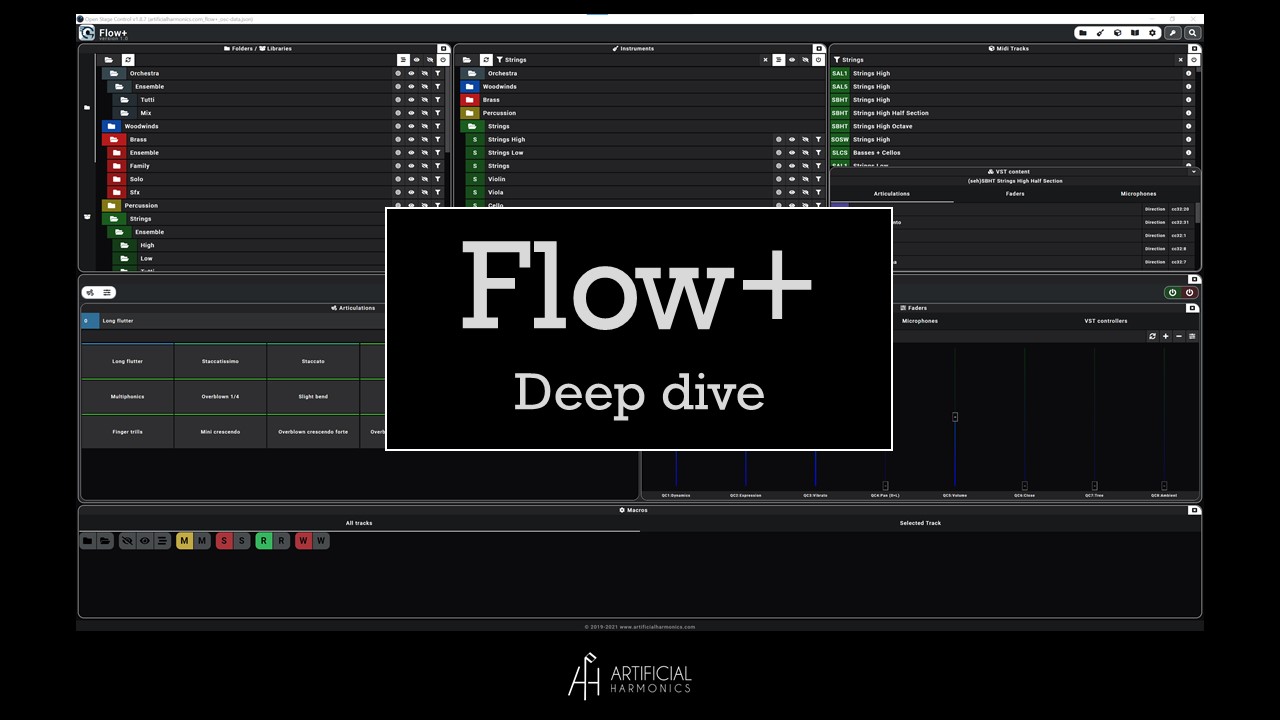
Scope of this document is to provide basic information regarding the usage of the different components that builds the Flow solution
- Vienna project
- Cubase project
- Open Stage Control application

Scope of this document is to provide basic information regarding the usage of the different components that builds the Flow solution
The Vienna project included in the Flow 2 folder contains all the instruments preconfigured and loaded in Vienna instances.
Instances are divided by library, so it will be easier to split the vienna template in case one is using a rig with multiple vienna hosts.
All Vienna bus in each instance come disabled, so you will need to activate a track before you will be able to play it, you can do this clicking on the vienna activate button or using the button available in the Flow+ app (explained later).
Sending a midi control change 125 with values -1/1 will deactivate/activate the vienna track. You can setup any remote controller to do this (like Flow+ does).
The output of each vienna bus is already setup and configured in Cubase. The mixer will be explained in the next chapter
The Cubase project is totally configured and ready to use.
The racks are all connected to the Vienna instances of the Vienna project, so make sure to have the Vienna project open before launching Cubase. The rack have already all the output enabled as defined in the Vienna instances and those are routed in the Cubase mixer.
Each track has already:
Flow has a predefined folder structure where all instruments are grouped
All expression maps have been generated starting by a central repository of articulations, this means that all expression maps have a coherent
This means that if you set an expression map in a track, and then copy and paste the midi content into another track, since the articulations have the same name, the switch of articulation will be maintained (if the new track has also that articulation of course)
Each output of Vienna is first routed to an instrument channel and then, depending on the nature of the instrument is routed to one of the following group channels:
Each first level group has a midi send to an FX channel where you can set your favorite reverb
Each track has quick controls set for the following:
Those are the default values, but you can at any moment change those in the track to record a different automation
Flow+ is a revolutionary application that allows you to control remotely the most important features of Cubase and Vienna, hiding the complexity of the sound libraries and acting like a sort of database of your entire set of sounds.
Flow+ is built using Open Stage Control and is made of a server that you need to run in your DAW machine and clients that can be opened in any browser connected to the same network. You can use Flow+ within your large touch screen, tablet or phone.
For more information on Open Stage Control visit the official project page.
At startup you need to activate the license that you have received with your order.
To do so you can follow the instruction in the setup guide available here
In Flow+ there are 5 different windows that can be switched on/off and that will allow you to interact with your DAW in different moments of your workflow.
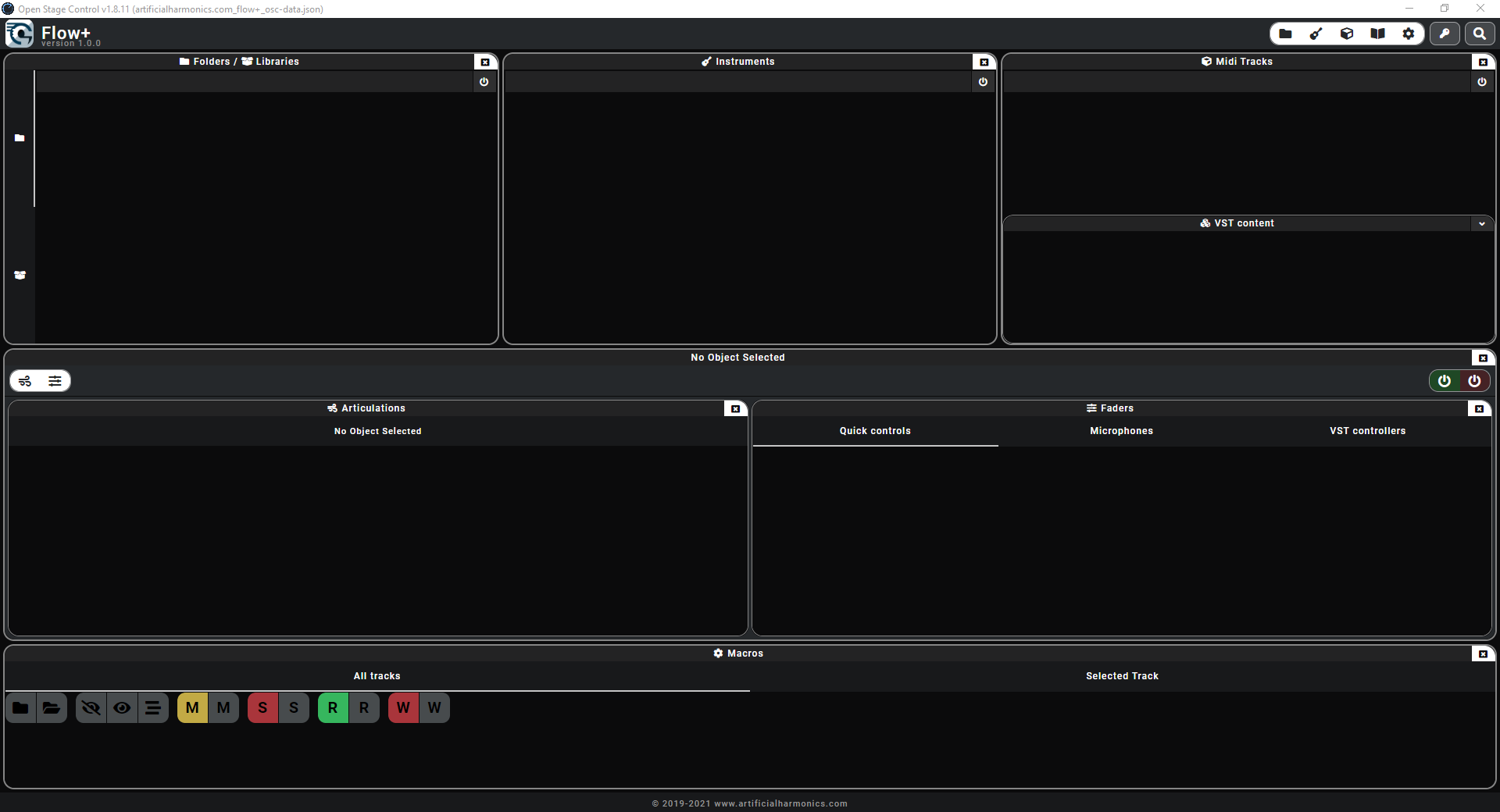
Each of those window can be toggled on/off using the actions in the following menu:
![]()
This will allow to adapt the content of Flow+ to the size of the screen you are actually using.
Flow+ can be also considered as an off-line application to navigate through the content of your set of libraries.
If offers a search function which can be launched through the search icon in the top menu ![]()
After clicking on this button the search window will appear.

Use the input area to type any text and press Enter. The result will show any library, instrument, midi track or articulation which are related to the searched text.
You can use the four buttons on the right of the search area to choose to view only certain types of object in the final result:

The Folders/Libraries, instruments and midi tracks windows have a similar behavior: they have a master toolbar with global action and an area to display the content with a series of actions related to a single object within the content.
When one of those windows is opened the master toolbar has one single action which activate the window and show its content, changing also the actions that are contained in the master toolbar.
Once activated the master menu will appear with its actions and the content will be loaded in the main area.
The master menu is made of the following actions (from left to right)
![]()
Through this window you can interact with your DAW performing a series of actions at the level of folders and libraries. You can also use this window to explore off-line the content of your sound set.
When first you open the window it appears like the first image below. On the left side you have two different tabs to switch the view from folders to libraries. For each of this view you need to click on the ![]() button to activate it and start to navigate through the content.
button to activate it and start to navigate through the content.
As soon as it is activated the window will look like the second picture below. Please note that the content shown depends on the data you have purchased, since only the folders related to the content of your product is displayed.
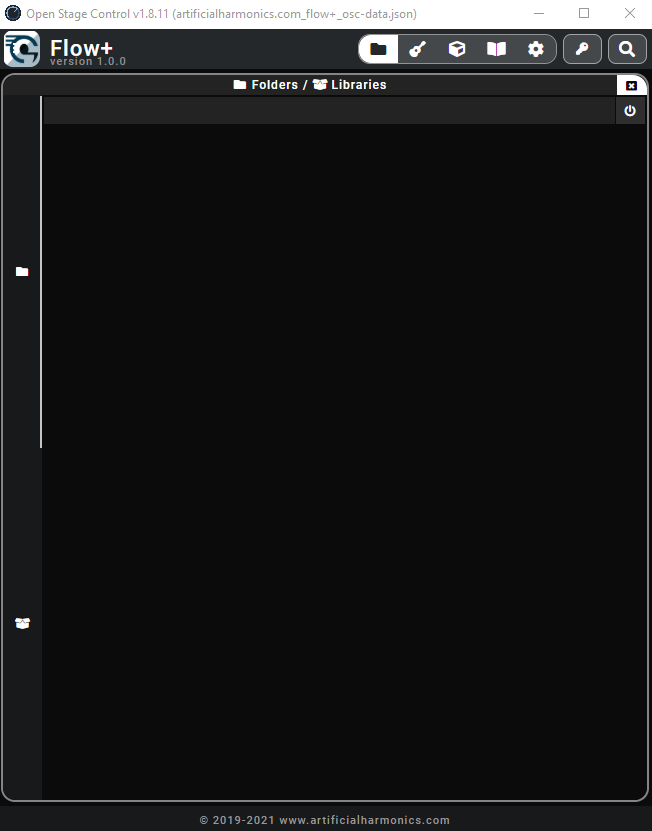
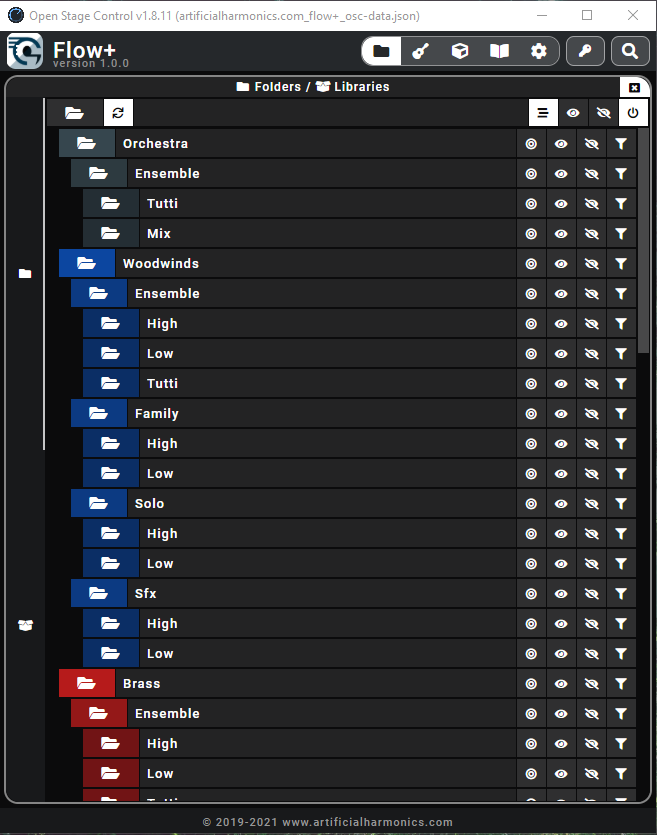
In the content view you will have a list of objects which are mapped to similar objects in your DAW and a series of actions that can be performed

Actions are the following from left to right:
The libraries window has a similar behavior to the folder one, after switching to this window using the left tab activate it and you will see the same master toolbar and content appearing

Actions are the following from left to right. Please note that when actions are applied to the vendor object it has a global effect on all libraries of that vendor.
Through this window you can interact with your DAW performing a series of actions at the level of instruments. You can also use this window to explore off-line the content of your sound set.
When first you open the window you need to click on the ![]() button to activate it and start to navigate through the content.
button to activate it and start to navigate through the content.
As soon as it is activated the window will look like the picture below. Please note that the content shown depends on the data you have purchased, since only the folders related to the content of your product is displayed.
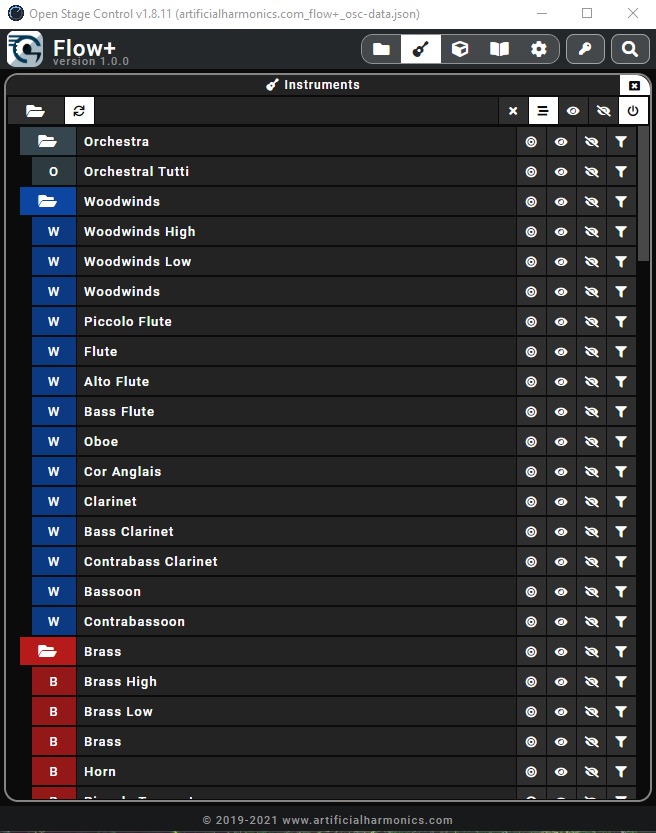
Like for the folders and libraries windows a series of actions are available for each of the instrument, from left to right:
When a filter has been applied from the folders or library window you will see that those filters are displayed in the master toolbar and that the content is actually filtered based on the filters applied like in the picture below.
When filters are applied the instrument actions will also take this in consideration when interacting with Cubase showing only tracks that are consistent with the filters applied NB this works only for the show and show only actions and not the hide action
You can click on the button in the master toolbar to remove those filters.
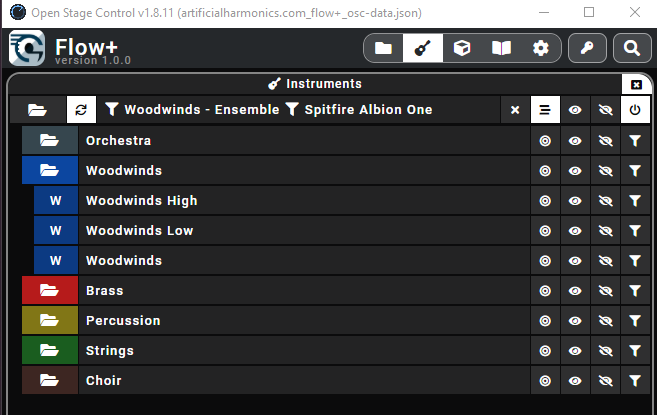
Through this window you can interact with your DAW performing a series of actions at the level of MIDI tracks. You can also use this window to explore off-line the content of your sound set.
When first you open the window you need to click on the ![]() button to activate it and start to navigate through the content.
button to activate it and start to navigate through the content.
Differently from the other windows, when activated it will show no content and you will need to apply any filter to make content visible. This is done to prevent the application from creating a huge number of objects (which in large templates can be up to 1000) and reduce the resources usage footprint.
As soon as you have applied a filter in one of the folders, libraries or instruments window it will look like the picture below. Please note that the content shown depends on the data you have purchased, since only the folders related to the content of your product is displayed.
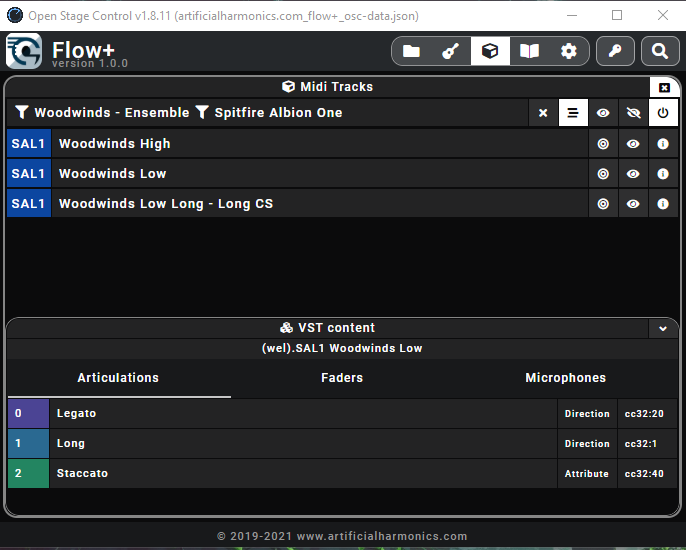
Like for the other windows a series of actions are available for each of the instrument, from left to right:
You can use the VST content area to visualize all articulations, faders and microphones which are currently configured for that midi track.
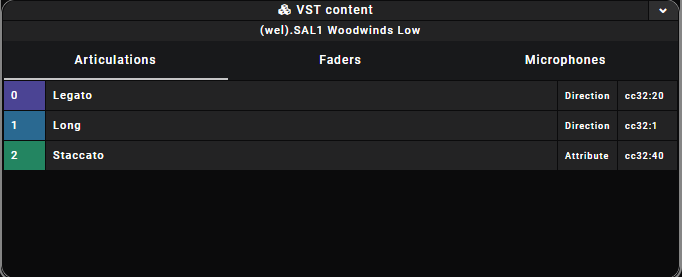

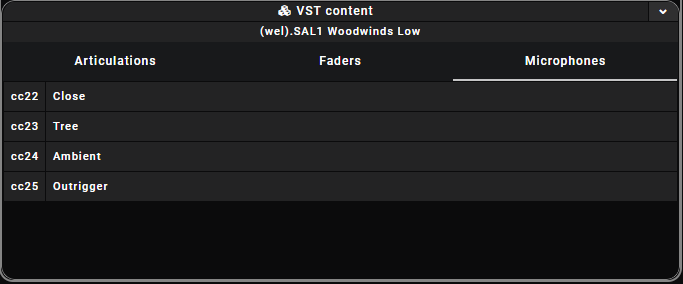
This window is the online part of the application, showing the content of the track currently selected in DAW and allowing you to interact with Cubase and Vienna without actually opening them.
One no track is shown the window will look like the picture below, showing a text “No Object Selected”
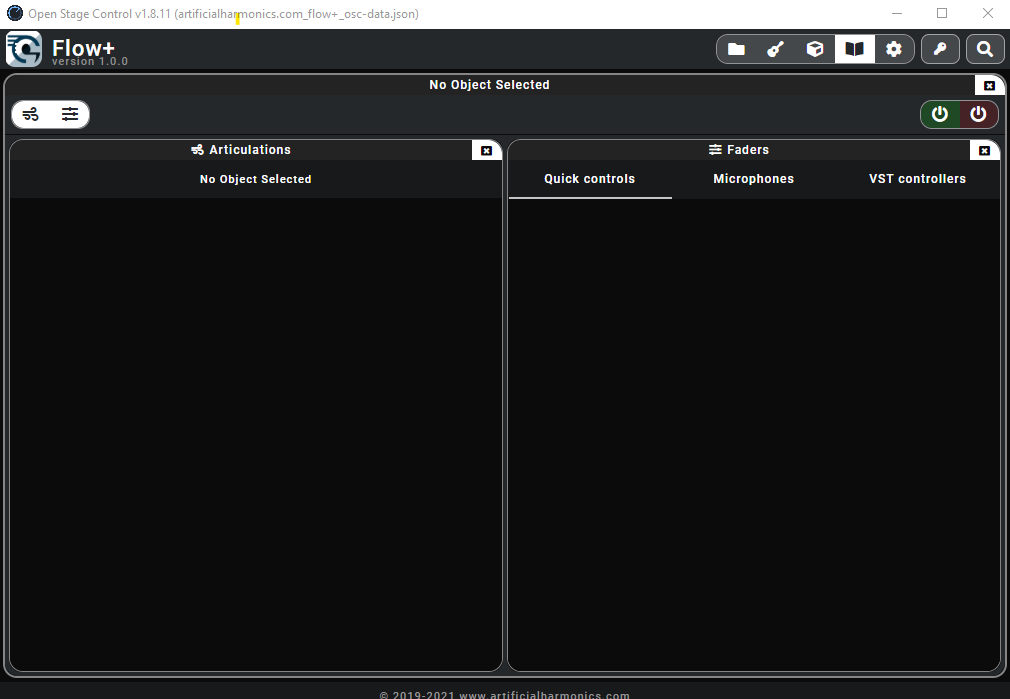
The main toolbar of this window has the following actions (from left to right)
As soon as you will select any MIDI track in Cubase you will see content appearing in those windows, like in the picture below, and you will see the name of the selected track appearing in the title area of the window.
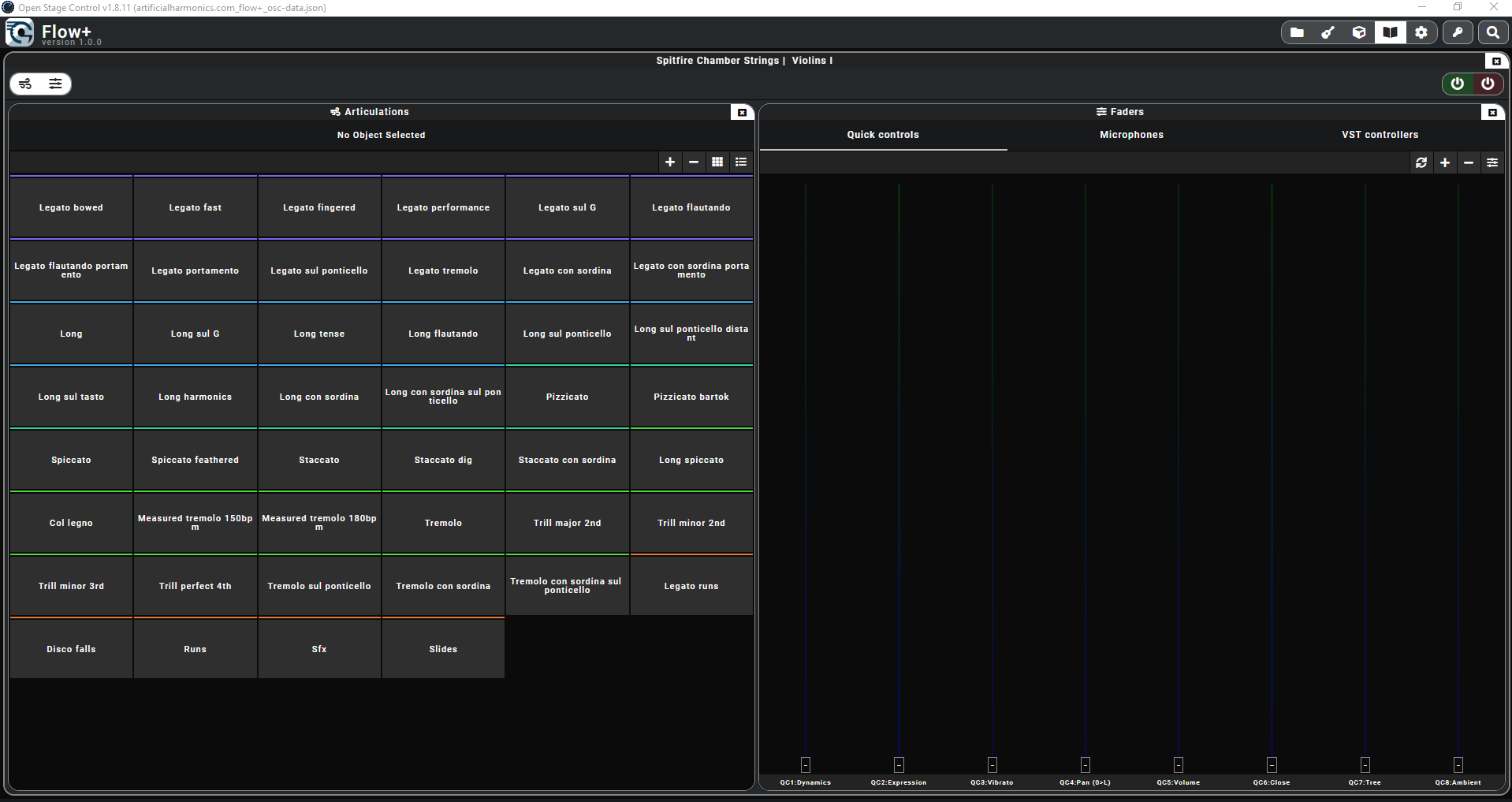
Through this area you will be able to switch the articulations of the selected instrument, just by clicking on the articulation button. The color and order of the articulation is a general setting of Flow and is coherent with the color and order that is in the expression map for Cubase.

Once you will select an articulation you will see in the top of the window the details of the chosen articulation with the following information:
In the master toolbar you also have a series of actions (from left to right)
The list mode is very useful when using a small device, it looks like the picture below
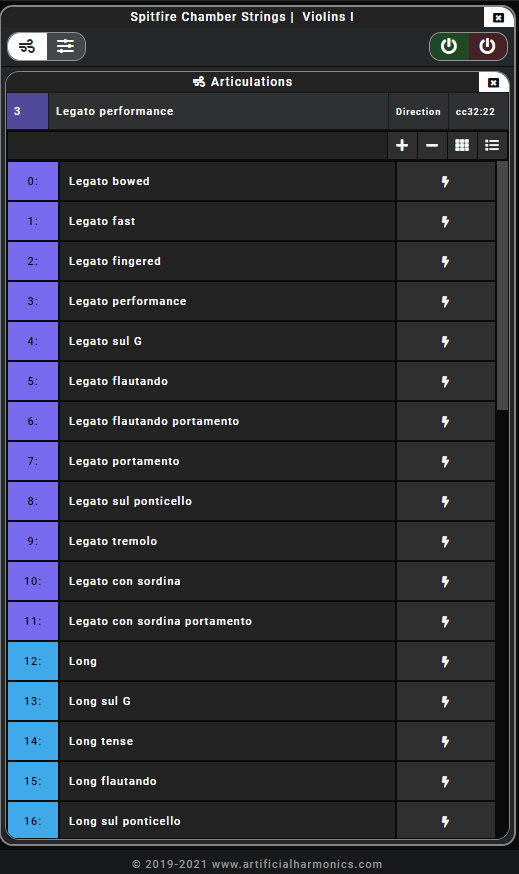
Through this area you will be able to do the following actions which will be applied to the host in Vienna associated to the track selected in DAW
Quick controls window

Microphones window
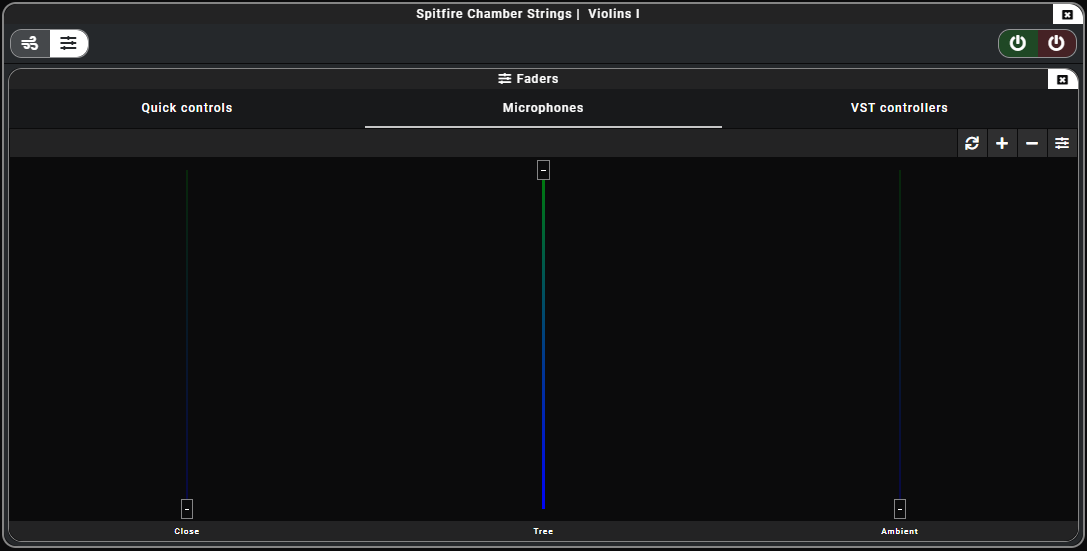
VST controllers window
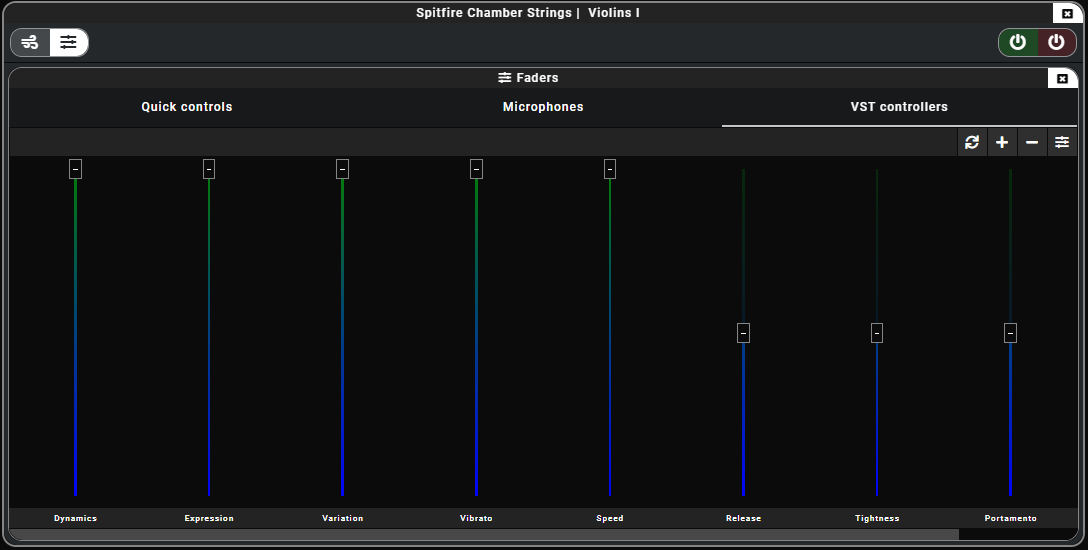
The master toolbar of each of these windows has the following actions:
The horizontal view for faders looks like the picture below
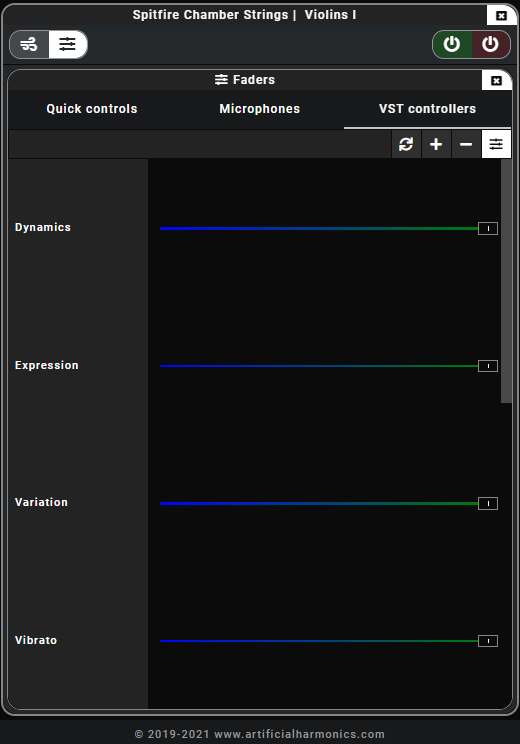
The macros window contains a series of macros which have been programmed to interact with Cubase.
Each tab refers to a category of macros and contains a series of buttons.
Macros can be added via configuration files.